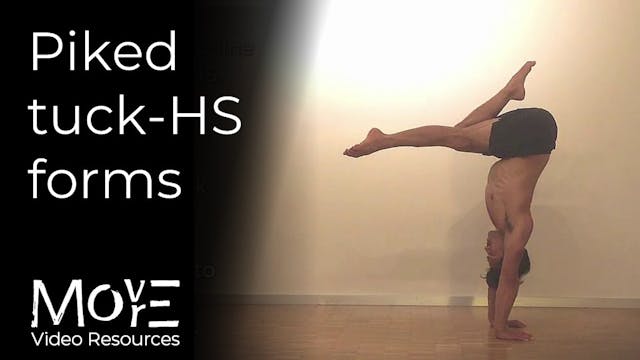'Head-in' straight-line & tuck HS
Handstand balance contexts
•
1m 56s
THE WHAT & WHY:
Fundamental 'head-in' handstand contexts for straight-line & tuck HS. As well as developing proprioception & vestibular system in inversion, the full 'head-in' position (chin 'tucked' & looking at feet/knees) allows for greater activation of UPPER-back muscles to stabilising the shoulders, valuable experience in ongoing handstand explorations.
In the initial instances, bringing the 'head in' will disturb not only your proprioception (i.e. of where your body/parts are in space), but also the constitution of your form as you body (undesirably) adjusts to the movement of the head - both will likely send you into OVER-balance. With consistent practice, the head-moment should NOT disturb the constitution of your form.
LEARN MORE (subscriber-only):
https://drive.google.com/file/d/1_xuxAeMe1k7WB9gnVc8Khfcc-_S7Gubk/view?usp=drive_link
___________________
For programming, guidance, & support for your physical practice:
FREE fundamental prehabilitation program: https://www.movemoremp.com
Online Support (1 to 1 coaching): https://movemoremp.com/onlinesupport
Elements (standardised programs): https://www.movemoremp.com/elements
[email protected]
Up Next in Handstand balance contexts
-
Tuck-handstand 'tik-toks'
THE WHAT:
The tuck-handstand 'tik-toks' allow you to develop experience of manipulating the spine in the frontal plane (i.e. sideward movement) whilst maintaining the integrity of your tuck-HS form. As such, it develops general proprioception (i.e. of where everything from the spine, down, is in ... -
Straight-line to Tuck-handstand
THE WHAT:
Once both 'straight-line' and 'tuck-HS' forms have been developed, putting them together allows for practice of dynamic balance work. This also develops your understanding of the differences between straight-line & tuck (namely the need to shift into COUNTERBALANCE for the latter), refi... -
Piked tuck-handstand forms
THE WHAT & WHY:
The 'piked' tuck-HS is a progressive tuck-HS variation in which the legs are extended fully. As such, the "load" to the front of the body (that which is normally the BENT legs in the fundamental 'tuck-HS) is greater and, consequently, more strength application to maintain the open...



